So, you or your child want to start martial arts. That’s GREAT news – martial arts can benefit you in so many ways! But here’s an age-old question: Will it be Karate or Taekwondo?
You’re not the first person to think about this. It’s a dilemma many people face.
To decide, there are many questions to answer including, What’s the difference? Which one is better? How do I find a school? The list goes on and on.
In this article, I answer those questions and more so you’ll be much better informed to make a good decision. Let’s get to it!
History of Karate and Taekwondo
Every people-group has its own forms of fighting and warfare – skills used to protect families, villages, and nations. In times of peace, these skills are practiced as competitive forms of wrestling, kicking, striking, etc. For this blog post, I focus on the history of martial arts in the Southeastern Asia region of the world and how Karate and Taekwondo developed.
It is said that Bohidharma, a Buddhist monk from Central Asia who lived in the 5th or 6th Century AD, taught special exercises to the monks of Shaolin Temple in China. At that time, China was a cultural hub for the rest of Southeast Asia. And so, elites from various regions of travelled to China to learn many things, including martial arts.
As they took this knowledge back to their countries and villages, these skills were combined with indigenous techniques to create new ways of fighting. Chinese martial arts arrived on the island of Okinawa and got combined with their existing styles of Te and Tegumi , which then spread to Japan under the name Karate.

Source: Wikimedia Commons
Karate Styles
In Okinawa, Te developed primarily in three villages: Shuri, Naha, and Tomari.
The predominant Karate style that developed in Shuri is Shorin Ryu. Shorin Ryu has multiple sub-styles (or variations). Examples include Matsumura Seito Shorin Ryu, Matsubayashi Ryu, Kobayashi Ryu, Motobu Ryu. And notable Masters include Matsumura Sokon, Itosu Anko, Motobu Choki, Chibana Chosin, Funakoshi Gichin, and Mabuni Kenwa.
The Karate styles that developed in Naha include Goju Ryu and Uechi Ryu. Other lesser known styles that emerged there include To’on Ryu and Ryuei Ryu. Notable Masters include Higaonna Kanryo, Miyagi Chojun, Uechi Kanbun, Kyoda Juhatsu, Arakaki Seisho, and Nakaima Kenko.
Situated between Shuri and Naha, the smaller village of Tomari was influenced by Shuri-Te and Naha-Te as well as its own unique characteristics. Notable Masters include Matsumora Kousaku, Motobu Choki, Kyan Chotoku, Nagamine Shoshin, and Oyata Seiyu.
Today, Okinawan Karate maintains an emphasis on self-defense, but on mainland Japan it’s treated more as a sport.
Taekwondo Kwans
Ultimately, Chinese and Japanese arts spread to Korea and combined with their own martial arts, particularly Taekkyeon, Subak, and Gwonbeop to create Taekwondo.
Originally, there were five Kwans (schools) of Taekwondo that were formed before the Korean War. Then, after the war, four more Kwans emerged. Many of the first Taekwondo masters trained in Japan, mostly under Funakoshi Gichin (Shotokan Karate) but they were also influenced by Chinese Kung Fu.
The original five Kwans were Song Moo Kwan, Chung Do Kwan, Moo Duk Kwan, Ji Do Kwan, and Chang Moo Kwan. And their founding masters were Ro Byung Jik, Lee Won Kuk, Hwang Kee, Chun Sang Sukp, and Yoon Byung-in.
The four additional Kwans established after the Korean War were offshoots of the original five. They were Han Moo Kwan, Jung Do Kwan, Kang Duk Kwan, and Oh Do Kwan. Their founding masters were Lee Kyo Yoon, Choi Hong Hi, Park Chul Hee, Hong Jong Pyo, and Lee Yong Woo.

Characteristics of Karate
Karate (meaning “empty hand” in Japanese) is an Okinawan/Japanese martial art that uses punches, kicks, knees, elbows, and open-hand strikes. Okinawan karate-jutsu (empty-hand method or science) emphasizes close-quarters standing grappling, joint locks, and throws. Japanese karate-do (empty-hand way or path) places greater emphasis on distanced sport competition. Japanese karate-ka (one who practices karate) use deeper stances than the Okinawan stylists’ relatively higher “natural” stances.
Also, Okinawan and Japanese karate are known for the use of strength and conditioning tools and drills (a.k.a. hojo undo) – but these are emphasized more in Okinawa. In short, although Okinawan karate stresses fighting and self-protection while Japanese karate is more sport centric, an Okinawan or Japanese karate-ka can choose one or both applications, depending on their personal motivations and needs.

by Andrii
Image Source:
Adobe Stock
Karate is taught via the 3Ks: kihon (fundamental techniques), kata (pre-arranged kihon combinations, also called forms), and kumite (sparring). Okinawan karate tends to emphasize pre-arranged sparring (the attacker and defender know what the other is going to do), whereas Japanese karate emphasizes free sparring (freestyle, as in Western boxing).
Characteristics of Taekwondo
Taekwondo (meaning foot-fist way) is a Korean martial art of unarmed combat that’s similar to Karate but emphasizes kicks. As in Karate, Taekwondo students learn basic techniques (ki bon sul), forms (poomsae or hyung), and sparring (kyorugi).
Taekwondo became a recognized Olympic sport in 2000. The sport involves LOTS of kicking but little to no hand striking or blocking as seen in Karate.

Well timed, fast kicks to the head and body, particularly jumping and spinning kicks, are predominant in Taekwondo.
Kicks are not as predominant in Karate; Japanese stylists use more kicks and Okinawan stylists tend to focus on lower kicks (below the belt level) and use their hands more.
Taekwondo is by far a kicking art. It uses distance and long-range foot techniques that require more lower-body flexibility than Karate does.
Weapons of Karate and Taekwondo
Okinawan kobudo (old martial way of Okinawa) is the term used for weapons systems of karate. Common kobudo weapons include bo, sai, tonfa, kama, nunchaku, and eku. Most Okinawan weapons were fashioned from farming implements or other common tools.
Japanese karate, by default, adopted many of these kobudo weapons into their practice. Japan, as a warring nation, had many types of ancient weapons used by samurai, ninjas, and other warriors.

by yellomello
Image Source:
Adobe Stock
Taekwondo was originally an empty-hand martial art. However, some taekwondo schools teach popular weapons found in other arts, including the bo, sword, nunchaku, etc.
Korea has it’s own array of ancient weapons, largely influenced by Chinese traditions, which are described in the Muyedobotongji.
Karate and Taekwondo Uniforms
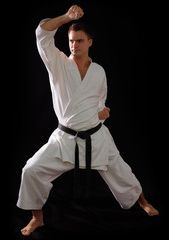
by Khorzhevska
Image Source:
Adobe Stock
The karategi (or simply, gi) is the traditional uniform of Karate. The style of this clothing was common among peasants, royalty, and everyone in between. The top, or jacket, has two front panels, one folded over the other and a belt on tied on the outside to keep them closed.

by zhu difeng
Image Source:
Adobe Stock
The Taekwondo uniform is known as a dobok and is similar to a Japanese gi, but the pants and sleeves of the dobok tend to be wider.
Traditional Taekwondo practitioners often wear a dobok that’s very similar to a gi, with a cross-over jacket front. The dobok of World Taekwondo (WT) practitioners have v-neck jackets, while International Taekwon-Do Federation (ITF) practitioners typically wear a jacket with a vertically closing front. Regardless, a tti (belt) is tied around the waist.
Karate Today
When people hear the word “Karate” they often think of Japan. But it originated in Okinawa, which was an independent kingdom when Karate was developed.
Karate was introduced to mainland Japan in the early 1900s (between 1900-1929). By 1933 all major Japanese universities had karate clubs, and in 1933 karate was recognized as a Japanese martial art by the government.
The original Okinawan karate styles still exist today, and there are hybrid/modern versions of those arts such as Isshin Ryu Karate (a fusion of Shorin Ryu, Goju Ryu, and Kobudo) developed by Shimabuku Tatsuo.
Karate Organizations
The Japan Karate Association (JKA), headquartered in Japan, was founded in 1948 by Master Funakoshi Gichin. JKA is the oldest Shotokan Karate organization.
The Japan Karate Federation (JKF), founded in 1969, was the national governing body of sport karate in Japan. Now called the Japan Karatedo Federation Renbukai (JKF Renbukai) recognizes the four “main” styles of Japanese sport karate: Wado Ryu, Shotokan, Shito Ryu, and Goju Ryu.
The World Karate Federation (WKF), founded in 1970 by European and Japanese Masters, includes 200 federation members from Asia, Europe, Panamerican countries, and Oceanian countries (5 continents). Like JKF, the WKF recognizes Wado Ryu, Shotokan, Shito Ryu, and Goju Ryu.
Taekwondo Today
After the Japanese occupation of Korea from 1910-1945, South Korea established a “new” national identity. The merging of Kwans and establishment of a government-recognized umbrella organization for Taekwondo was part of this process.
Similar to the history of Karate, original (or “old”) Taekwondo focused on fighting and combat. As Taekwondo merged toward a homogenized identity, sport-oriented applications became the focus.
Taekwondo Organizations
The International Taekwondo Federation (ITF) was founded by Choi Hong Hi in 1966 with headquarters in Seoul, South Korea. Due to disagreements with the Korea Taekwondo Association (KTA), the national governing body of Taekwondo, Choi moved the ITF headquarters to Toronto, Canada in 1972. In 1985, the headquarters was relocated once again. That time it was to Vienna, Austria.
In 1971, South Korean President Park Chung Hee declared Taekwondo the national sport of South Korea. Subsequently, in 1973, the World Taekwondo Federation (now called World Taekwondo) was established. World Taekwondo (WT) is a member of the International Olympics, with the sport debuting as a demonstration sport at the 1988 Summer Olympics in Seoul, South Korea, and again at the 1992 Olympics in Barcelona, Spain.
Taekwondo was adopted as an official Olympic sport in 1994 and the first Olympic competitions in Taekwondo occurred at the 2000 Summer Olympics in Sydney, Australia.
GMAU Shotokan Karate
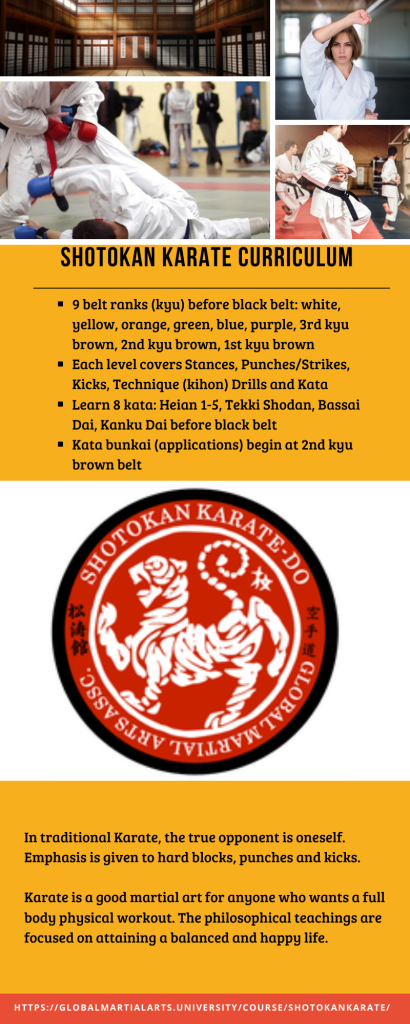
With our online training, you can earn rank certified by the Global Martial Arts Association (GMAA).
Did we pique your interest in Karate? If so, check out the GMAU Shotokan Karate Program.
Set up a Beginner’s Account for FREE and start training TODAY!
GMAU Taekwondo
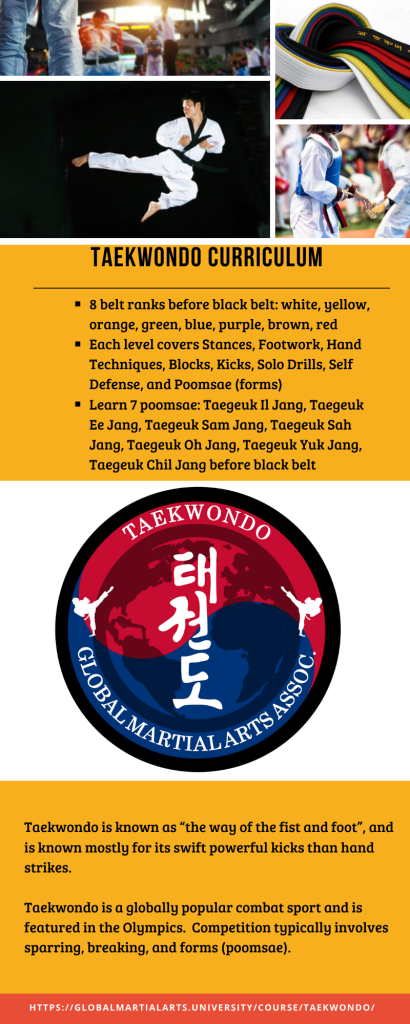
With our online training, you can earn rank certified by the Global Martial Arts Association (GMAA). Further, anyone earning black belt rank in the GMAU Taekwondo program will be fully prepared to undergo testing and certification of rank by the Kukkiwon (World Taekwondo Heaquarters).
Did we get you interested in Taekwondo? If so, check out the GMAU Taekwondo Program.
Set up a Beginner’s Account for FREE and start training TODAY!
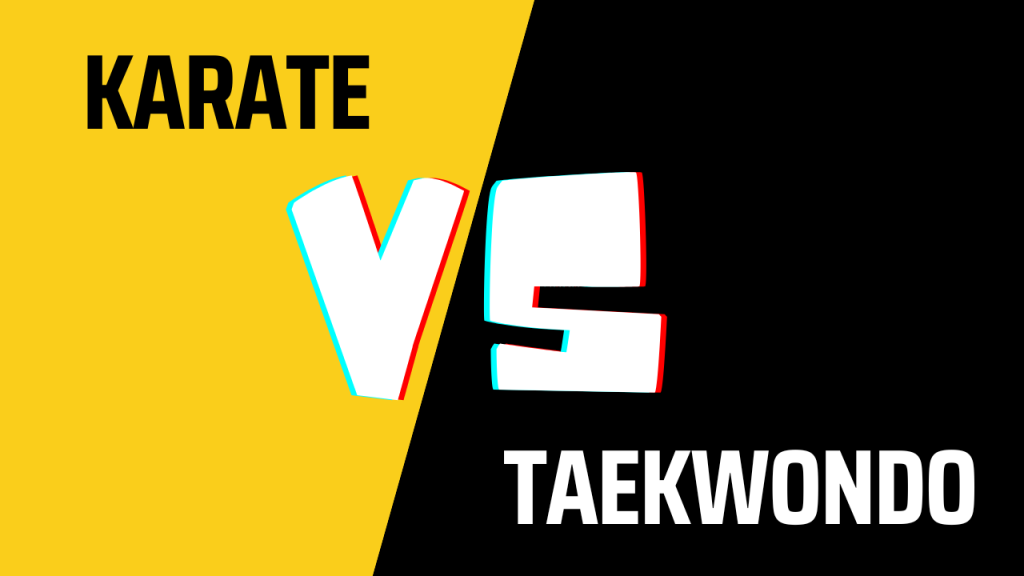


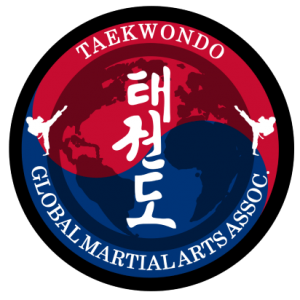


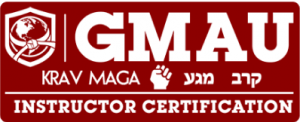



Pingback: Karate and Taekwondo … What’s the Distinction? – International Martial Arts College - Personal Safety News
I wanna learned taekwondo
Sounds great! Please check out the details of our complete Taekwondo program at: https://globalmartialarts.university/course/taekwondo/
And if you have any questions or need help registering, please reach out to our Student Support Portal at: https://globalmartialarts.freshdesk.com/support/home
Thanks! We look forward to having you train with us soon…
The GMAU Team
Your comprehensive breakdown of the differences between Karate and Taekwondo sheds light on their rich histories and unique characteristics. The emphasis on each art’s origin and evolution provides valuable insights for aspiring martial artists. Your article serves as a helpful guide for those grappling with the decision between Karate and Taekwondo, offering clarity on their distinct philosophies and training methodologies.
Thanks for your positve words about our blog article!
– The GMAU Team